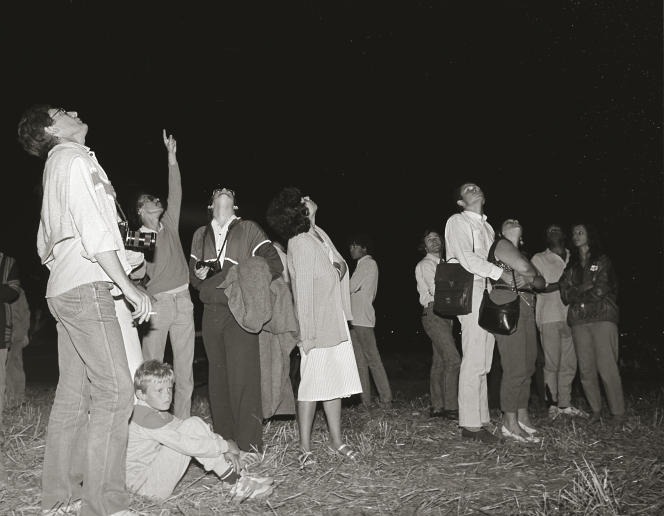“L’Echec d’une prophétie” (When Prophecy Fails), by Leon Festinger, Henry W. Riecken and Stanley Schachter, translated from English (United States) by Sophie Mayoux and Paul Rozenberg, preface by Gérald Bronner, PUF , 376 p., €25, digital €20.
When Immanuel Kant advocated limiting knowledge and extending belief, no doubt he took little account of the obstinacy of believers in finding confirmations of their faith when reality contradicts their expectations. The reissue of The Failure of a Prophecyby Leon Festinger, Henry W. Riecken and Stanley Schachter, a monument of American sociology published in 1956 (and translated very belatedly in 1993), comes at the right time to dismantle this mechanism, while conspiracy and predictions of misfortune encumber our daily lives exponentially, especially since the start of the Covid-19 pandemic.
A masterpiece of social psychology, as exciting to read as a successful fiction, this book tells how sociologists managed to infiltrate a small group of evangelical ufologists, convinced of the imminence of a deluge. Their prophetess, Marian Keech, an American housewife allegedly inspired by “Sananda”, the interplanetary reincarnation of Jesus, had fixed the apocalypse for December 21, 1956. Day by day, the evolution of their reactions to the invalidation of their gospel was recorded by the team of academics.
A phenomenon of “cognitive dissonance”
The clandestine intrusion of these observers in the midst of a handful of ordinary Americans, prey to an exaltation whose description often turns out to be comical, is certainly problematic because it is clandestine. The authors acknowledge this in their “methodological appendix”. But this shortcoming is largely compensated for in their eyes by the opportunity they have been given to study on the spot a phenomenon of ” cognitive dissonance “.
Coined by the designer of the company, the psychosociologist Leon Festinger (1919-1989), this notion designates a state of tension generated by a conflict between beliefs and information (or between several contradictory pieces of information). This conflict pushes the subject either to modify said information when the predicted catastrophe does not occur (the “Creator” had mercy on his people, lending his sympathetic ear to the entreaties of the “chosen”), or to leave the movement in order to reduce the agonizing gap between theory and facts.
For a long time, cognitive dissonance could only be studied using historical examples or ethnology. Thus, the famous “Cargo cult” in Melanesia illustrates the effort made by the natives to bring their vision of the end of the world into line with the landing of Western ships on their shores. But the lack of observable terrain in real time posed a problem for specialists, who had to content themselves with potentially biased or incomplete written sources. The article that appeared in a local newspaper in Lake City, not far from Chicago, reproducing Marian Keech’s press release on the upcoming flooding of American territory, provided Leon Festinger’s team with a case in point which they knew how to exploit.
You have 37.26% of this article left to read. The following is for subscribers only.
We would like to say thanks to the author of this short article for this incredible web content
“The failure of a prophecy”: deluge and disillusion
Discover our social media profiles as well as other related pageshttps://nimblespirit.com/related-pages/

